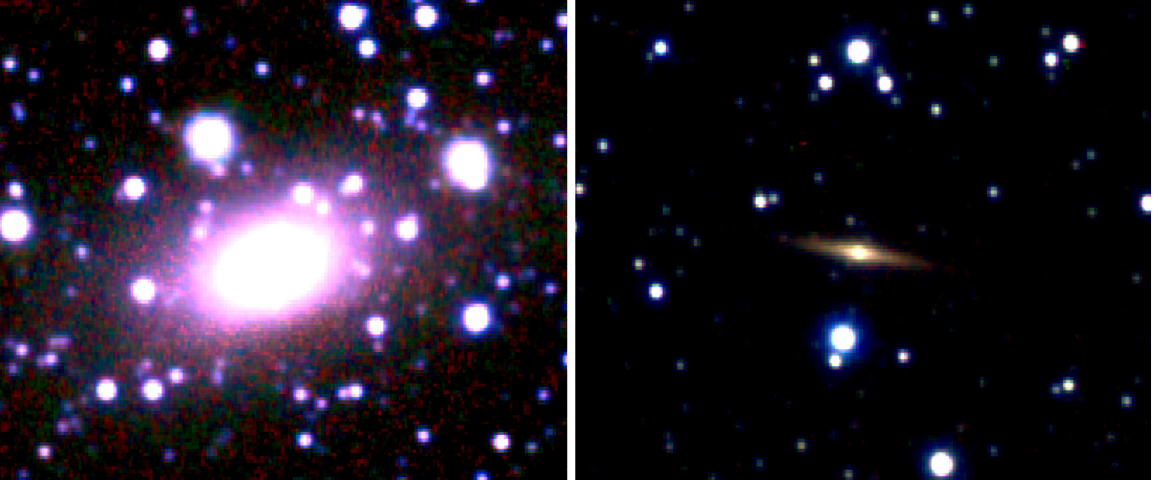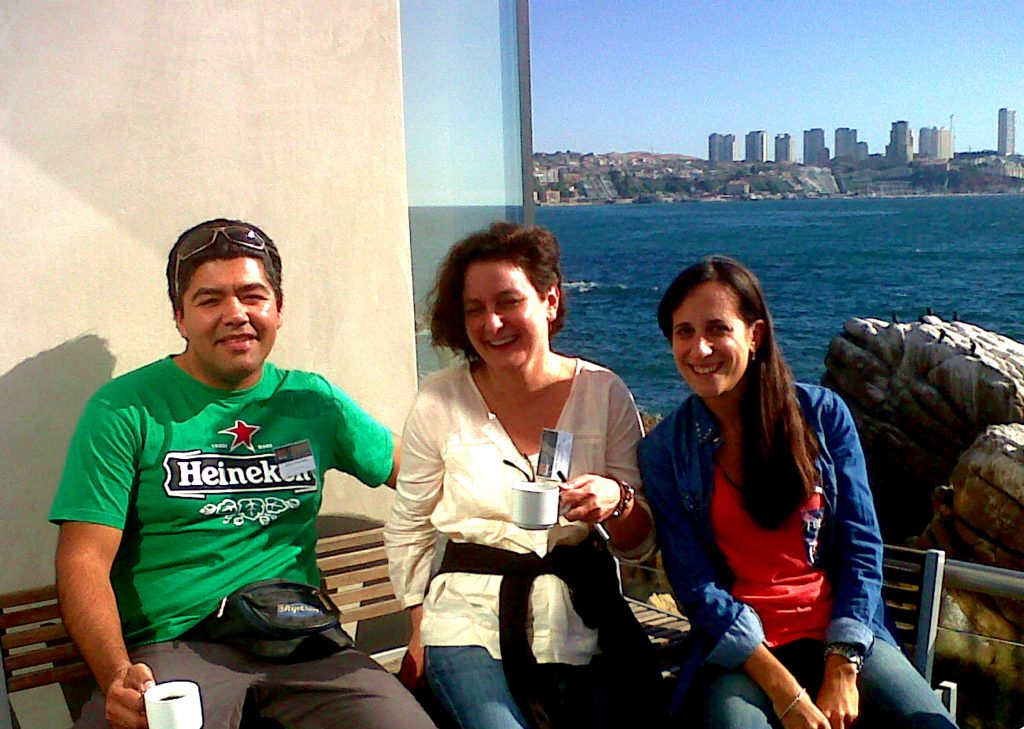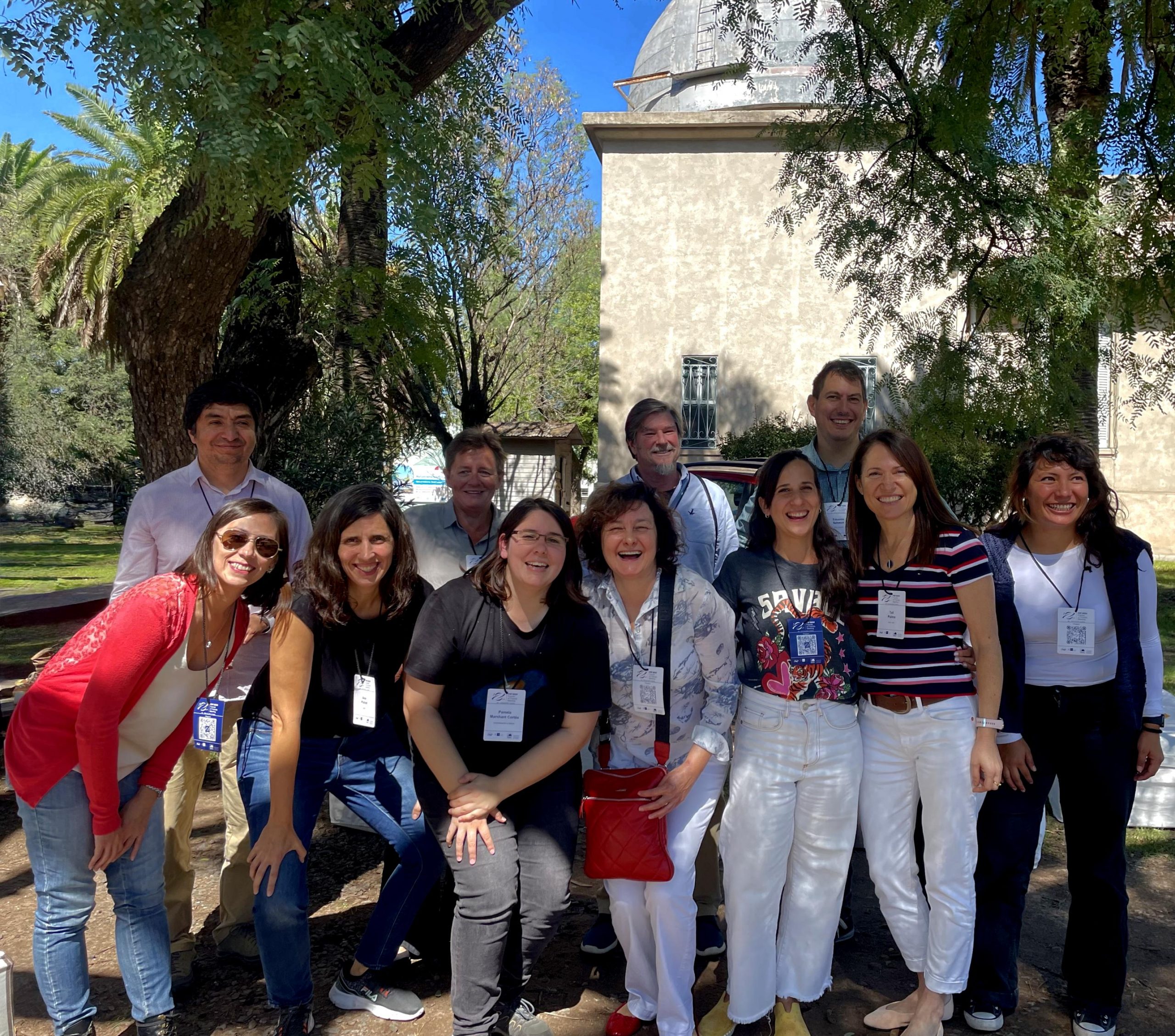An international team led by María Victoria Alonso, researcher at the Instituto de Astronomía Teórica y Experimental (IATE, Institute of Theoretical and Experimental Astronomy), working under the Consejo Nacional de Investigaciones Científicas y Técnicas (CONICET, National Scientific and Technical Research Council), and the Observatorio Astronómico de Córdoba (OAC, Astronomical Observatory of the National University of Córdoba), has made a significant advance in studying one of the most challenging observable regions in the universe: the Zone of Avoidance (ZoA). By using data from the VVVX survey (VISTA Variables in the Vía Lácta eXtended) and other artificial intelligente techniques, the team identified 167.559 galaxies which had previously remained hidden by our galaxy’s disk.
The Milky Way cosmic barrier
The Milky Way is similar to a thick curtain of cosmic dust and stars which prevents us from looking behind it. This curtain is called the Zone of Avoidance (ZoA), a sky region where gas, dust, and light from our own galaxy blocks the view of other galaxies. Nonetheless, there is a trick: the near-infrared light (NIR), acting as a X-ray vision, is able to cross that barrier and unveil what lies behind. This technique was used by the team led by María Victoria Alonso to face this challenge.
Previously, elaborating a catalogue of galaxies behind our own was an arduous, manual task. A new method to detect them was developed in this project, which started in 2012. However, this process generated thousands of candidates requiring a thorough visual examination, one candidate at a time. As a result of the tremendous effort of many collaborators from different institutes, a first catalogue named ‘VVV NIRGC I’ including more than 5.000 galaxies was created and it demonstrated the enormous potential of the data. In spite of it, the scale of the challenge exposed the limits of the analysis and the need for a more powerful tool to process the whole data from the survey.
The key contribution of artificial intelligence
A new catalogue, ‘VVV NIRGC II’, was developed with the implementation of machine learning algorithms to images captured by the VISTA telescope, located in the Observatorio Europeo Austral (ESO, European Southern Observatory), Chile. By using this automatic processing together with the samples visually obtained, it was possible to classify efficiently all detected galaxies, and limitations of traditional methods were overcome.
A manual analysis of such huge amount of data would have been unattainable without advanced computing tools. Not only did the team’s algorithms identify galaxies, but also provided information about their properties, like brightness and morphology. Only a 14% of these galaxies had been detected in previous surveys.

A story of perseverance and collaboration that spans over more than a decade lies behind this technological advance. To Dr. Laura Baravalle, one of the head scientists in the project, the catalogue signals the end of a long journey. “To me, it was the end of what had started in 2012 with Victoria Alonso as my supervisor, when I reached out to her for my undergraduate thesis”, said Baravalle.”At first, it was a short project, and we ended up cataloguing thousands of galaxies when there was nothing previously. It was amazing, all we did together.”
The project escalated from a “very tiny region” to a huge portion of the sky, a challenge that would not have been possible without following a collaborative strategy. Baravalle emphasizes the importance of remaining persistent across her licenciate (undergraduate studies), doctoral and postdoctoral studies, as well as Victoria Alonso’s capacity to include other experts. “It was too much for the two of us”; she admitted, making reference to the overwhelming amount of data. “We had to contact experts in artificial intelligence and experts on dealing with huge quantities of data to process all the information and keep making advances.”
Apart from expanding our knowledge about the near universe, this catalogue is the scaffolding for future investigations with cutting-edge instruments, like the Vera C. Rubin Telescope and the Nancy Grace Roman Space Telescope.
Furthermore, it suggests the possible existence of massive structures, like galaxy filaments that had previously remained unseen. The team has already been preparing for the next phase: its goal is to use spectroscopy to understand the nature of the discovered objects and calculate their distances. This study will allow a 3D-map reconstruction of the hidden region behind the Milky Way. The spectograph KMOS (K-band Multi Object Spectograph), installed in the Very Large Telescope (VLT) in Chile, will be used for this project. To carry out the survey, the team will spend more than 100 observing nights in the ESO since January, 2026. “We finished with photometry and now we move on to spectrography,” explained Baravalle.

Maria Victoria Alonso’s role and the IATE
Maria Victoria Alonso, specialized researcher of galaxy dynamics and extragalactic astronomy at the IATE, has been studying galaxies and star populations in different environments for years. Her experience analysing the Zone of Avoidance and applying statistical techniques to fix the effects of galactic absorption has been crucial for this discovery.
To María Victoria Alonso, this project is more than just a catalogue of galaxies; it is the pinnacle of her career. “It is the paper of my life,” she said emotionally. For María, this achievement closes a chapter that had begun during her doctorate studies. “In my thesis, I worked with elliptic galaxies and determinated their distances, and now I finish with a survey of the same region that, at that time, I looked at with awe; it was a place where almost nobody worked.”
Alonso reflects on the collaborative approach, describing how a project leader’s vision “looks further ahead.” Although she knew that the project started with a small region, “I already had it in mind that I wanted it all,” she confessed.
Talking about the legacy of this investigation, Alonso says that “apart from the project itself, what remains is the way to work. We transmit knowledge because we learn as we do”. To her, the most important legacy is “the habitus of daily work, effort and work ethic. I believe preserving that at all times is very important,” she concluded.

Another step in exploring the universe
The paper, published in the Astronomy and Astrophysics magazine, strengthens the IATE and the OAC’s role in international astronomy and highlights the importance of global collaboration for astronomical research. New opportunities to understand matter distribution in the universe and the effects of the Milky Way on extragalactic observation arise from these results.
Thanks to this advance, Alonso’s team continues exploring the misteries of the Zone of Avoidance, proving once more that even the most elusive sky regions can be deciphered with suitable tools.
Scientific publication |
| The VVV near-IR galaxy catalogue of the southern Galactic disc
Team | M. V. Alonso, L. D. Baravalle, J. L. Nilo-Castellón, C. Villalon, M. Soto, M. A. Sgró, I. V. Daza Perilla, C. Valotto, M. Lares, D. Minniti, P. Marchant Cortés, F. Milla Castro, M. Hempel, J. Alonso-García, L. Macri, A. Pichel, N. Masetti, R. K. Saito, M. Gómez M. V. Alonso, L. D. Baravalle, J. L. Nilo-Castellón, C. Villalon, M. Soto, M. A. Sgró, I. V. Daza Perilla, C. Valotto, M. Lares, D. Minniti, P. Marchant Cortés, F. Milla Castro, M. Hempel, J. Alonso-García, L. Macri, A. Pichel, N. Masetti, R. K. Saito, M. Gómez |
